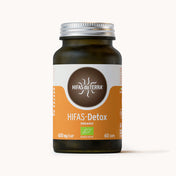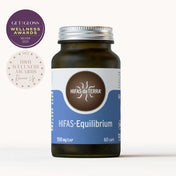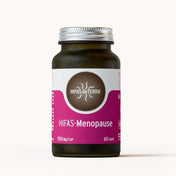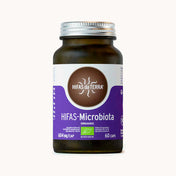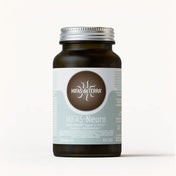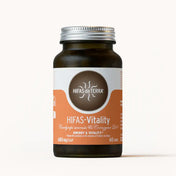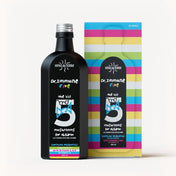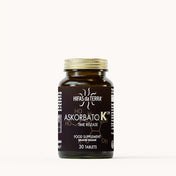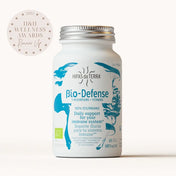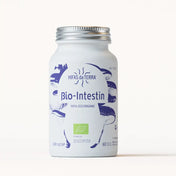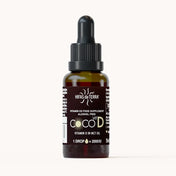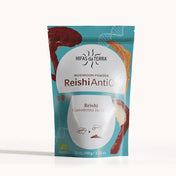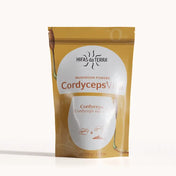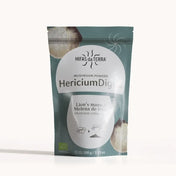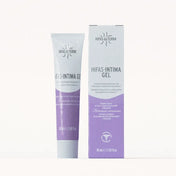Content index
The Breast cancer treatments With chemotherapy they are decided based on their molecular classification and its hormonal receptors (RH). However, various studies have demonstrated the effectiveness of fungi use In this type of pathologies, especially on two levels:
- Prevention: to reduce prevalence and avoid recurrence.
- Adjuvant treatment: to complement conventional treatment by reducing adverse effects of other treatments.
Studies on prevention in breast cancer
In breast cancer prevention, the study conducted by Australian scientists in 2009 (Zhang et al. 2009). In this, they showed that Chinese women who consumed 4 g of dehydrated mushrooms daily and a 1 g of green tea, They reduced by 89% the risk of breast cancer.
In fact, the prevalence of breast cancer in the rural areas of China or Japan is much lower than that of urban areas, which is also linked to the type of diet that follows (fundamentally based on mushrooms and rice), as well as their lifestyle.
According to the figures managed by the UN, almost a third of deaths caused by cancer is due to dietary and behavioral factors, among which a high body mass index, low consumption of fruits and vegetables, lack of physical activity and alcohol and tobacco consumption.
Studies on adjuvant treatments in breast cancer
Some bioactive compounds derived from fungi, in concentrations with therapeutic action (such as extracts), have proven to be a complement that can improve the quality of life of the patient and increase survival Combined with chemo and radiotherapy treatments.
What are adjuvant treatments?
As stated in various medical texts, a adjuvant is a treatment that "contributes to the improvement of the quality of life in general or in a specific process." In this definition, antidepressants and anxiolytics would enter, but also other substances such as laxatives.
Currently, in this definition the support care that aim to complement the therapies directed to prevent infections, manage the toxicities associated with chemotherapy, make recommendations on lifestyle, etc. would also enter complement.
A 2010 study showed that the early integration of support treatment, in contributing with conventional treatment, increases the quality of life, mood and improves the prognosis of patients.
Reduction in side effects
An article published in 2001 (Mayell, 2001) includes the effects of the combination of fungal extracts with chemotherapy, radiotherapy and hormonal radiotherapy treatments. The observed results showed that this combination:
- They help reduce naúseas, pain, loss of appetite and hair, etc.
- It can show a synergistic effect on tumor regression.
Figure. Decreased side effects of chemotherapy using Maitake (Frondosa Tap) (Mayell, 2001).
Tumor growth inhibition
According to a study published in 2006 (Juic J et al., 2006), in cell tests, increasing doses of extracts of Ganoderma lucidum Decreases the proliferation of breast cancer cells.
Figure. Dose effect- and time-dependent of ganoderMerMantriol, a component of ganoderma lucidum, in the proliferation of breast cancer cells hormone-dependent mda-Mda-231 (Jiang et al., 2011).
Drug interaction
It has been shown that the use of fungi as an adjuvant in the treatment of first -line chemotherapy or radiotherapy does not interfere with the effectiveness of the protocolized clinical treatment. There are numerous studies that demonstrate the compatibility of mycotherapy with chemotherapeutic treatments:
- Use of Taxol With the extract of Agaricus Blazei or of Edodes lentinula (Ahn et al., 2004; Okuno and one, 2011).
- Use of carboplatin and of VP16 (Etoposide) with extract of A. Blazei (Ahn et al., 2004).
- Use of Cisplatino With the extract of L. Edodes and slowly, a beta-glucan obtained from L. Edodes (Hirose et al., 2007; Ina et al., 2011).
- Use of PLACLITAXEL with lentinan (Kubota et al., 2009), irinotecan, 5-Fluorouracil and Levofolinato With extract of L. Edodes (Okuno et al., 2011).
- The effectiveness of Ganoderma lucidum to reduce the nephrotoxicity of certain chemotherapets such as Cisplatin (Kao et al., 2013).
Breast cancer
More information about breast cancer and adjuvant treatments developed from fungi
Medina Foundation
The metabolism of conventional drugs is carried out through hepatic cytochromes (P450), which do not coincide with cytochromes involved in the assimilation of fungal preparations.
Hifas da Terra has its own fungal extracts that have been validated by various scientific studies in terms of their effectiveness and the absence of interaction with cytochromes that involve other drugs.
It has been shown that Hifas Da Terra extracts have a low possibility of interaction In vivo with other medications that metabolize through cytochrome P450 (Medina Foundation).
In addition to medication absence, extracts can act synergisticly with conventional treatments, improving adherence to patient treatment and helping to complete the cycles of treatments by minimizing their side effects.
Hifas Da Terra Professional Area
Training resources and exclusive technical material for health professionals
Summary
Mushrooms have an important role in the maintenance of well -being, but in high concentrations they are also of interest in the prevention and complementary treatment of breast cancer, as evidenced in various publications. These investigations, as well as the non -drug interaction of some of their extracts predict a long journey in their therapeutic applications.
Bibliographic references
- Ahn WS, Kim Dj, Chae GT, Lee JM, Bae Sm, Without Ji, Kim Yw, Namkoong Se, Lee IP (2004) Natural Killer Cell Activity and Quality of Life Were Improved by Consumption of a Mushroom Extract, Agaricus Blazei Murill Kyowa, in gynecological cancer patients undergoing chemotherapy. International Journal of Gynecological Cancer 14, 589-594.
- Akihisa T, Nakamura and, Tagata M, Tokuda H, Yasukawa K, Uchiyama E, Suzuki T, Kimura and (2007) Anti-inflammatory and anti-Tumor-Promoting Effects of Triterpene Acids And Sterols From The Fungus Ganoderma lucidum. Chemistry & Biodiversity 4, 224-231.
- Aoyagi H, Iino and, Takeo T, Horii and, Morishita and, Horiuchi R (1997). Effects of OK-432 (picibanil) on the estrogen receptors of MCF-7 cells and potentiation of antiproliferative effects of tamoxifen in combination with OK OK-432. Oncology 54: 414-23.
- Boh B, Berovic M, Zhang J, Zhi-bin L (2007) Ganoderma lucidum and ITS Pharmaceutically Active Compounds. Biotechnology Annual Review 13, 265-301.
- Chan and, Chang T, Chan CH, Yeh Yc, Chen CW, Shieh B, Li C (2007) Immunomodulatory Effects Of Agaricus Blazei Murill in Balb/Cbyjmice. Journal of Microbiology, Immunology and Infection 40, 201-208.
- Chen s, oh sr, phung s, hur g, Ye jj, kwok sl, shrode ge, Belury m, Adams Ls, Williams D (2006) Anti-Aromatase Activity of Phytochemicals in White Button Mushrooms (Agaricus bisporus). Cancer Research 66, 12026-12034.
- Elbatrawy in, Ghonyy EA, Alassar MM, Wu FS (2015) Medicinal Mushroom Extracts Possess Differential Antioxidant Activity and Cytotoxicity To Cancer Cells. International Journal of Medicinal Mushrooms 17, 471-479.
- Eliza WL, FAI CK, Chung LP (2012). EFFICACY OF YUNZHI (Coriolus versicolor) On Survival in Cancer Patients: Systematic Review and Meta-Analysis. Recent Patents on inflammation @ allergy drag discovery 6, 78-87.
- Medina Foundation, Assessment CyP450 Inhibition by Fungi Dietary Supplements, Medina Foundation, Center for Excellence in Investigative Medicines Research in Andalusia.
- Gao J, Min B, Ahn E, Nakamura N, Lee H, Hattori M (2002) New Triterpene Aldehydes, Lucialdehydes A-C From Ganoderma lucidum & Their Cytotoxicity Against Murine & Human Tumor Cells. Chemistry & Pharmacology Bulletin 50, 837-840.
- Hetland G, Johnson E, Lyberg T, Bernardshaw S, Tryggestad Ama, Grinde B (2008) Effects of the Medicinal Mushroom Agaricus Blazei Murill on Immunely, Infection and Cancer. Scandinavian Journal of Immunology 68, 363-370.
- Hetland G, Johnson E, Lyberg T, Kvalheim G (2011) The Mushroom Agaricus Blazei Murill Elicits Medicinal Effects on Tumor, Infection, Allergy, and Inflammation Through its Modulation of Innate Immune and Ameliairation of Th1/TH2 IMBALANCE AND INFLAMMATION. Advances in Pharmacological Sciences, Article ID 157015.
- Hirose A, Sato E, Fujii H, Sun B, Nishioka H, Aruoma Oi (2007) The Influence of Active Hexose correlated compound (AHCC) on Cisplatin-Evoked Chemotherapeutic and Side Effects in Tumor-Bearing Mice. Toxicology and Applied Pharmacology 222, 152-158.
- Hong Sa, Kim K, Nam SJ, Kong G, Kim MK (2008) A Case -Control Study on The Dietary Intake of Mushrooms and Breast Cancer Risk Among Korean Women. International Journal of Cancer 122, 919-923.
- Ina K, Furuta R, Kataoka T, Kayukawa S, Yoshida T, Miwa T, Yamamura and, Takeuchi and (2011) Lentinan Prolonged Survival in Patients With Gastric Cancer Review S-1-Based Chemotherapy. World Journal of Clinical Oncology 2, 339-343.
- Jiang J, Slivova V, Harvey K, Valachovicova T, Sliva D (2004) Ganoderma lucidum SUPPRESSES GROWTH OF BREAST CANCER CELLS THROCH THE INHIBITION OF AKT/NF-KAPPA B Signaling. Nutrition and Cancer 49, 209-216.
- Jiang J, Slivova V, Sliva D (2006) Ganoderma lucidum Inhibits Proliferation of Human Breast Cancer Cells by Down-Regulation of Estrogen Receiver and NF-Kappab Signaling. International Journal of Oncology 29, 695-703.
- Jiang J, Jedinak A, Sliva D (2011) GanoderMerMantriol (GDNT) Exerts ITS EFFECT ON GOWTH AND INVASIVENESS OF BREAST CANCER CELLS THRUCH THE DOWN-REGULATION OF CDC20 AND UPA. Biochemical and Biophysical Research Communications 415, 325-329.
- KAO CHJ, Jesuthasan AC, Bishop KS, MP Glucina, Ferguson LR (2013) Anti-Cancer Activities of Ganoderma lucidum: Active ingredients and pathways. Functional Foods in Health and Disease 3, 48-65.
- Kim Th, Kim JS, Kim Zh, Huang RB, Chae YL, Wang RS (2016) Induction of apoptosis in McF -7 Human Breast Cancer Cells By KHz (Fusion of Ganoderma lucidum and Polyporus umbellatus Mycelium). Molecular Medicine Reports 13, 1243-1249.
- Kimura and, Kido T, Takaku T, Sumiyoshi M, Baba K (2004) isolation of an anti-angioGenic substance from Agaricus Blazei Murill: STIs Antitumor and Antimastatic Actions. Cancer Science 95, 758-764.
- Kimura and, Taniguchi Mand Baba K. (2002) Antitumor and Antimastatic Effects on Liver of Triterpenoid Fractions of Ganoderma lucidum: Mechanism of Action and Isolation of An Active Substance. Anticancer Research 22, 3309-3318.
- Klaus A, Kozarski M, Vunduk J, Todorovic N, Jakovljevic D, Zizak Z, Pavlovic V, Levic S, Niksic M, Van Griensven LJLD (2015) Biological potential of extracts of the Wild Edible Basidiomycete Mushroom Frondosa tap. Food Research International 67, 272-283.
- Kodama N, Komuta K, Nanba H (2002) Can Maitake MD-FACTION AID CANCER PATERS? Alternative Medicine Review 7, 236-239.
- Kozarski M, Klaus A, Jakovljevic D, Todorovic N, Vunduk J, Petrović P, Niksic M, VRVIC MM, Van Griensven L (2015) Antioxidants of Edible Mushrooms. Molecules 20, 19489-19525
- Kubota E, Kataoka H, Hayashi K, Kamiya T, Sasaki M, Ogaswara N, Yamada T, Wada T, Mori and, Mizoshita T, Shimura T, Mizushima T, Okamoto Y, Ohara H, Joh T (2009) Advanced Stomach and Pancreas Cancer Successfully Chemotherapy with S-1/Paclitaxel/Lentinan. Hepato-Gastroenterology 56, 106-110.
- Masuda and, Inoue H, Ohta H, Miyake A, Konishi M, Nanba H (2013) Oral Administration of Solubleβ-Glucans Extracted from From Frondosa tap INDUTS SYSTEMIC ANTITUMOR IMMUNE RESPONSION AND DECREASES IMMUNOSUPPRESSION IN TUMOR-BARING MICE. International Journal of Cancer 133, 108-119.
- Masuda y, Murata y, Hayashi M, Nanba H (2008) Inhibitorry Effect of MD-FRACTION ON TUMOR METASTASIS: INVOLVEMENT OF NK CELL ACTIVATION AND SUPPRESSION OF INTERCELLULAR ADHESION MOLECULE (ICAM) -1 EXPRESSION IN LUNG VASCULAR Endothelial Cells. Biological and Pharmaceutical Bulletin 31, 1104-1108.
- Mayell M (2001) Maitake Extracts and Their Therapeutic Potential - A Review. Alternative Medicine Review 6, 48-60.
- Mizuno M, Morimoto M, Minato K, Tsuchida H (1998) Polysaccharides from Agaricus Blazei Stimulate Lymphocyte T-Cell Subsets in Mice. Bioscience, Biotechnology and Biochemistry 62, 434-437.
- Müller Ci, Kumagai T, O'Kelly J, Seeram NP, Heber D, Koeffra HP (2006) Ganoderma lucidum Causes Apoptosis in Leukemia, Lymphoma and Multiple Myeloma Cells. Leukemia Research 30, 841-848.
- Nanba H (1997) Maitake D-Faction: Healing and Prevent Potential For Cancer. Journal of Orthomolecular Medicine 12, 43-49.
- Nguyen Vt, Tung NT, Cuong TD, Hung Tm, Kim Ja, Woo MH, Choi JS, Lee JH, Min Bs (2015) Cytotoxic and Anti-Genogenic Effects of Lostanene Triterpenoids From Ganoderma lucidum. Phytochemistry Letters 12, 69-74.
- Notoya Menoli Rcr, Mantovani MS, Ribeiro Lr, Speit G, Jordão Bq (2001) Antimutagenic Effects of the Mushroom Agaricus Blazei Murrill extracts on V79 Cells. Mutation Research 496, 5–13.
- Ohno s, Sumiyoshi and, Hashine K, Shirato A, Kyo S, Inoue M (2013) Quality of Life Improvements Among Cancer Patients In Remission Following The Consumption Of Agaricus Blazei Murill Mushroom Extract. Complementary Therapies in Medicine 21, 460-467.
- Okuno K, one K (2011) Efficacy of Orally Administered Edodes lentinula Mycelia Extract for Advanced Gastrointestinal Cancer Patients Undergoing Cancer Chemotherapy: a Pilot Study. Asian Pacific Journal of Cancer Prevention 12, 1671-1674.
- Patel S, Goyal A (2012) Recent Developments in Mushrooms As Anti-Cancer Therapeutics: A Review. Biotechnology 2, 1-15.
- RAJ PV, DHANAJ SA, ALI SA, KUAN TH, MATHIYALAGAN S, RAMAN S (2015) ANTI-PROLIFERATIVE EFECT OF Ganoderma lucidum Polysaccharide and Triterpenoid Fractions Against Cancer Cells. Manipal Journal of Pharmaceutical Sciences 1, 32.
- Rajasekar S, Selvakumar P, Periasamy K, Raaman N (2008) Polysaccharides from Basidiomycetes: A promising source for immunostimulating and anticancerous activity, in Biotechnology: Concepts and Applications Chapter XII. Narosa Publishing House, P 232-269.
- Ruiz-Cabello J, Berghmans K, Kaplan O, Lippman Me, Clarke R, Cohen JS (1995). Hormone dependence of breast cancer cells and the efforts of tamoxifen and estrogen: 31p nmr studies. Breast Cancer Research and Treatment 33, 209-17.
- Souza-Paccola EA, Bomfeti Ca, Fávaro LCL, Fonseca ICB, Paccola-Meirelles LD (2004) Antimutagenic Action of Edodes lentinula and Agaricus Blazei ON Aspergillus Nidulans Conidia Brazilian Journal of Microbiology 35, 311-315.
- Svagelj M, Berovic M, Gregori A, Wraber B, Simcic S, Boh B (2012) Immunomodulating Activities of Cultivated MEDICINAL MATIKE MUSHROOM Frondosa tap (Dicks.: Fr.) s.f. Gray (Higher Basidiomycetes) on Peripheral Blood Mononuclear Cell. International Journal of Medicinal Mushrooms 14, 377-383.
- Ulbricht C, Weissner W, Basch E, Giese N, Hammerness P, Rusie-Seamon E, Varghese M, Woods J (2009) Maitake Mushroom (Frondosa tap): Systematic Review by the natural standard Research Collaboration. Journal of the Society for Integrative Oncology 7, 66-72.
- Wu B, CUI J, ZHANG C, LI Z (2012) A POLYSACCHARIDE FROM Agaricus Blazei Inhibits proliferation and promottes apoptosis of osteosarcoma cells. International Journal of Biological Macromolecules 50, 1116-1120.
- Wu Gs, Lu JJ, Guo JJ, Li Yb, Tan W, Dang Yy, Zhong Zf, Xu Zt, Chen XP, Wang Yt (2012) Ganodericacid DM, A Natural Triterpenoid, Induces Dna Damage, G1 Cell Cycle Arrest and apoptosis in Human Breast Cancer Cells. Phytotherapy 83, 408-414.
- WU TS, SHI LS, KUO SC (2001) Cytotoxicity of Ganoderma lucidum Triterpenes. Journal of Natural Products 64, 1121-1122.
- Zhang M, Huang J, Xie X, Holman CD (2009) Dietary Intakes of Mushrooms and Green Tea Combine To Reduce The Risk of Breast Cancer in Chinese Women. International Journal of Cancer 15.
